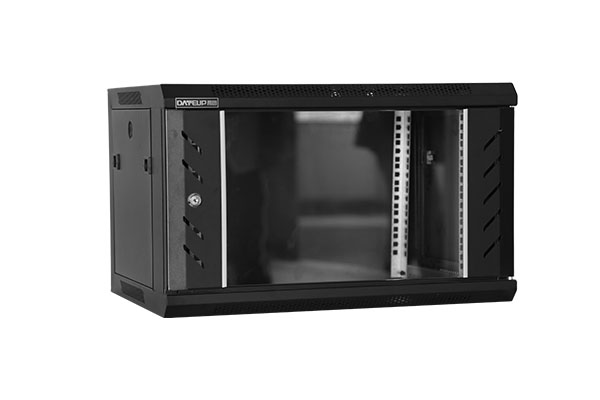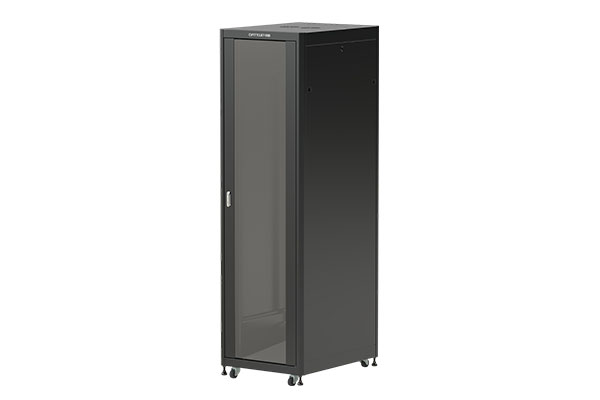How flexible are data center cabinets?
Release Time : 2024-12-05
The flexibility of data center cabinets is a key indicator that determines whether a data center can quickly adapt to growing computing needs.
1. Expansion of physical space
Data centers usually reserve a certain amount of physical space for future expansion. These spaces can be:
Vacant cabinet locations: Data centers may reserve some unused cabinet locations to facilitate the addition of more cabinets in the future.
Expandable computer room space: Data centers may plan additional computer room space to expand new computer rooms in the future.
2. Adaptability of power and cooling systems
Scalability of power supply: Data centers usually design redundant power supply systems and ensure that the power supply can expand as the number of cabinets increases. This may include backup power supplies (such as UPS systems) and expandable power distribution units (PDUs).
Scalability of cooling systems: As the capacity of cabinets increases, the cooling demand will also increase. Data centers usually design cooling systems (such as cold aisle containment, hot aisle containment, chillers, etc.) to support future expansion.
3. Expansion of network infrastructure
Expansion of network bandwidth: As the capacity of data center cabinets increases, the demand for network bandwidth will also increase. Data centers are usually equipped with scalable switches and routers to support future network needs.
Redundant design: Data centers will design redundant network paths to ensure high availability when network devices are added.
4. Flexibility of management and monitoring systems
Automated management: Modern data centers usually use automated management tools, such as DCIM (data center infrastructure management) systems, to achieve dynamic monitoring and management of cabinets and equipment. This tool can help data centers quickly identify and solve problems and support flexible capacity expansion.
Monitoring system: Data centers will be equipped with a comprehensive monitoring system to monitor the use of power, cooling, network and other resources of the cabinets in real time, thereby providing data support for capacity expansion.
5. Standardization and modular design
Standardized cabinets: The use of standardized cabinet design can be easily replaced and expanded, reducing the complexity of the expansion process.
Modular design: Some data centers use modular design, such as prefabricated modular data center units (PODs), which can be quickly deployed in a short time and support future expansion.
The capacity expansion flexibility of data center cabinets mainly depends on the adaptability of their physical space, power supply and cooling systems, expansion of network infrastructure, flexibility of management and monitoring systems, and standardized and modular design. Highly flexible data centers can quickly adapt to the increase in computing demand and maintain high performance and reliability.
1. Expansion of physical space
Data centers usually reserve a certain amount of physical space for future expansion. These spaces can be:
Vacant cabinet locations: Data centers may reserve some unused cabinet locations to facilitate the addition of more cabinets in the future.
Expandable computer room space: Data centers may plan additional computer room space to expand new computer rooms in the future.
2. Adaptability of power and cooling systems
Scalability of power supply: Data centers usually design redundant power supply systems and ensure that the power supply can expand as the number of cabinets increases. This may include backup power supplies (such as UPS systems) and expandable power distribution units (PDUs).
Scalability of cooling systems: As the capacity of cabinets increases, the cooling demand will also increase. Data centers usually design cooling systems (such as cold aisle containment, hot aisle containment, chillers, etc.) to support future expansion.
3. Expansion of network infrastructure
Expansion of network bandwidth: As the capacity of data center cabinets increases, the demand for network bandwidth will also increase. Data centers are usually equipped with scalable switches and routers to support future network needs.
Redundant design: Data centers will design redundant network paths to ensure high availability when network devices are added.
4. Flexibility of management and monitoring systems
Automated management: Modern data centers usually use automated management tools, such as DCIM (data center infrastructure management) systems, to achieve dynamic monitoring and management of cabinets and equipment. This tool can help data centers quickly identify and solve problems and support flexible capacity expansion.
Monitoring system: Data centers will be equipped with a comprehensive monitoring system to monitor the use of power, cooling, network and other resources of the cabinets in real time, thereby providing data support for capacity expansion.
5. Standardization and modular design
Standardized cabinets: The use of standardized cabinet design can be easily replaced and expanded, reducing the complexity of the expansion process.
Modular design: Some data centers use modular design, such as prefabricated modular data center units (PODs), which can be quickly deployed in a short time and support future expansion.
The capacity expansion flexibility of data center cabinets mainly depends on the adaptability of their physical space, power supply and cooling systems, expansion of network infrastructure, flexibility of management and monitoring systems, and standardized and modular design. Highly flexible data centers can quickly adapt to the increase in computing demand and maintain high performance and reliability.







